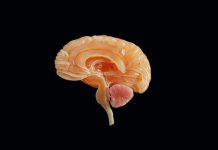
In a new study, researchers found that the most common version of a protein called CD33 plays a crucial role in regulating white blood cells in the human brain.
It could have important implications in the fight against Alzheimer’s disease.
The research was conducted by a team at the University of Alberta.
Alzheimer’s disease affects more than 44 million people around the world.
The study builds on previous research that had identified the protein as a factor that may decrease a person’s likelihood of Alzheimer’s disease.
However, less than 10% of the population has that version of CD33 as opposed to the more common one.
According to the team, white blood cells in the brain, called microglia, play a critical role in Alzheimer’s disease—they can be harmful or protective.
The presence of CD33 on microglia suggests the immune cells can protect the brain from Alzheimer’s disease under the right circumstances.
If scientists can target the more common version of CD33 to influence microglia to become more like those that have the protective, rare version of CD33, it could lead the way to make the microglia protective as opposed to harmful—and be a key in treating the disease.
These findings set the stage for future testing of a causal relationship between CD33 and Alzheimer’s disease, as well as testing therapeutic strategies to sway microglia from being harmful to protecting against the disease by targeting CD33.
Microglia have the potential to ‘clean up’ the neurodegenerative plaques, through a process called phagocytosis—so a therapy to harness this ability to slow down or reverse Alzheimer’s disease can be envisioned.
One author of the study is U of A chemist and immunologist Matthew Macauley.
The study is published in Communications Biology.
Copyright © 2019 Knowridge Science Report. All rights reserved.



